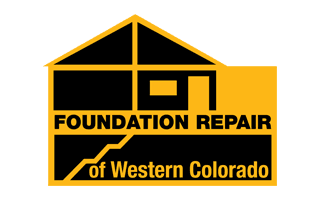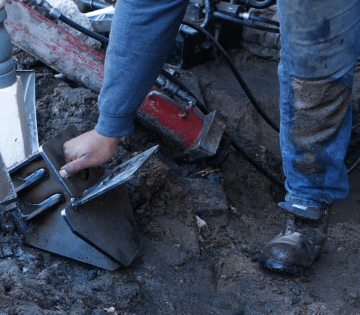Screw Anchor and Soil Nailing in Colorado
Helical Anchors (also referred to as tiebacks) provide lateral stability to foundation walls and retaining walls with unbalanced earth pressures. Helical anchors can be installed with hand-held equipment, mini-excavators, skid steers, backhoes, trackhoes, or crane-supported rigs so the anchors can be installed in almost any application. This versatility, along with the ability to immediately load and test the anchors, make helicals a convenient and economical solution for a wide variety of projects.

Advantages
- Predictable capacity
- Helix blade configuration selected to achieve design embedment and capacity
- All-weather installation
- Can be installed in areas of limited or tight access
- Installation does not generate spoils
- Clean installation with no messy grout
- Load tests can be performed immediately following installation
- Available with optional hot-dip galvanizing for added corrosion protection
Design Considerations
Helical anchors are a factory-manufactured steel foundation system consisting of a central shaft with one or more helix-shaped bearing plates, commonly referred to as blades, welded to the lead section. Extension shafts, with or without additional helix plates, are used to extend the anchor into competent load-bearing soils. Helical anchors are advanced (“screwed”) into the ground with the application of torque.
The terms helical piles, screw piles, helical piers, helical anchors, helix piers, and helix anchors are often used interchangeably by specifiers. However, the term “pier” more often refers to a helical foundation system loaded in axial compression, while the term “anchor” more often refers to a helical foundation system loaded in axial tension.
Helix Blade Geometry

Helical anchors feature blades manufactured with a true helix shape conforming to the geometry criteria of ICC-ES AC358. The leading and trailing edges of true helix blades are within one-quarter inch of parallel to each other and any radial measurement across the blade is perpendicular to the anchor shaft. A true helix shape along with proper alignment and spacing of the blades is critical to minimize soil disturbance during installation.
Conversely, blades that are not a true helix shape are often formed to a ‘duckbill’ appearance. These plates create a great deal of soil disturbance and do not conform to the helix geometry requirements of ICC-ES AC358 since their torque to capacity relationships are not well documented.
Contact our experts for your Foundation Repair Needs
schedule your free inspection


